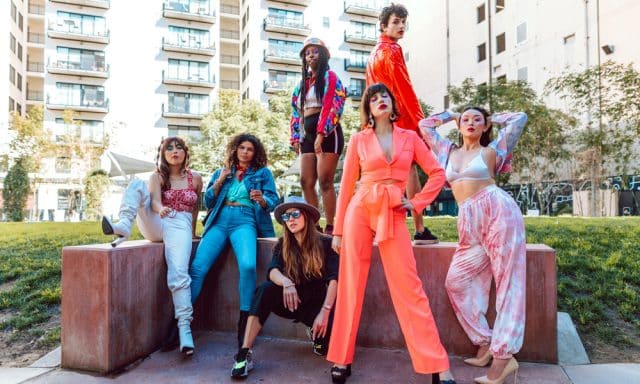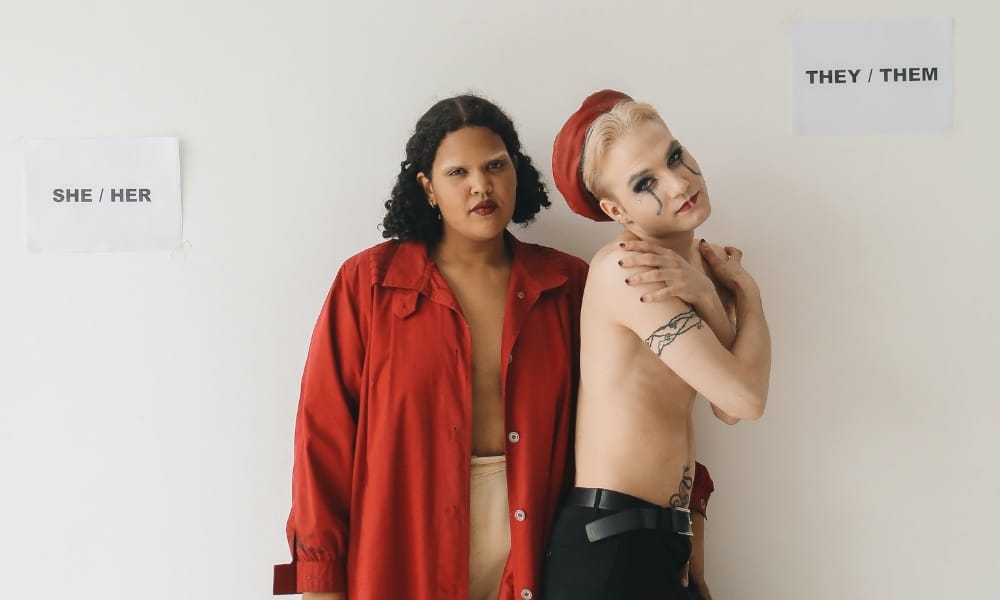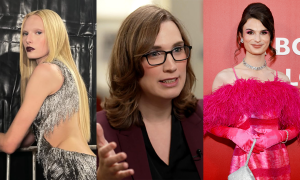Have you ever felt like your gender doesn’t quite tick the boxes of either “male” or “female”? Maybe your gender is somewhere between or outside of those two categories? Then, perhaps you may relate to the term “non-binary”.
But what does non-binary mean, exactly? How does it feel to identify as such? And what pronouns do non-binary people use? Let’s take a look at the answers to these questions.
Related | What Does Cisgender Mean?
Non-binary: Meaning And Related Terms
Non-binary describes someone who identifies as neither male nor female. It can be used to describe someone’s gender identity or as an umbrella term for a range of identities that don’t fall into the binary system with which most of society categorizes gender.
If all of that sounds confusing, let us clear up some terms first.
Gender identity is your personal sense of your own gender. Most people will identify as either male or female. And for most people, their gender identity aligns with their sex assigned at birth — that is, the sex your doctor or parents determined for you based on your external sex characteristics.
If you were born with a penis, you were most likely to have been assigned male. For those born with a vagina, you were most likely to have been assigned female. Additionally, if you feel as though your sex assigned at birth aligns with your gender identity, that makes you cisgender.
On the other hand, people who identify as transgender feel that their sex assigned at birth doesn’t align with their gender identity. Many trans people opt to undergo gender-affirming surgery or hormone therapy so that their physical appearance aligns more with what they conceive as their gender identity.
But, for non-binary people, gender goes beyond just male or female. For non-binary people, gender is more like a spectrum, a rainbow of varied hues from maleness to femaleness. Some non-binary people may identify somewhere in the middle of the spectrum, outside of it altogether, or with more than one gender at varying points in their life.

Pexels / Anna Shvets
What Is The Non-binary Umbrella?
There is no one way to be non-binary. Many different identities fall under the non-binary umbrella, including:
- Agender: These people identify as having a neutral or no gender identity. Some non-binary people prefer to identify as genderless, gendervoid, or neutrois, which are similar to being agender.
- Bigender: These are people who identify with two genders. These genders do not have to be only male or female.
- Genderfluid: These are people whose gender identity fluctuates over time. They can also be described as moving between different gender identities. A genderfluid person may identify as more female one day, genderless the next day, and more male on another day.
- Genderqueer: Some people use this somewhat controversial term to define their gender identity. The term is a play on the word “queer”, which was once used to describe something “strange” or “unusual”. While once used as a slur against people who deviated from gender norms, “queer” is now used to describe anyone or anything that isn’t straight or cisgender.

Getty Images
Are Non-binary People Transgender?
Some people in the non-binary community identify as transgender and see non-binary as an identity that falls under the trans umbrella. After all, non-binary people, like trans people, find that their gender identity does not align with their sex assigned at birth.
However, it is important to note that many transgender people do not identify as non-binary. While there are transgender people who identify as non-binary, many trans people identify as either male or female. As such, one should not assume that a trans person identifies as non-binary as well.
Like some trans people, some non-binary people also elect to undergo medical procedures such as gender-affirming surgery and hormone therapy so that their bodies align more with their identity. For many, these procedures help to alleviate gender dysphoria – a sense of distress or impairment associated with the incongruence of one’s assigned sex and gender identity. Gender dysphoria can be severely debilitating for some and is associated with anxiety, depression, isolation, and self-harm risks.
It should be noted that a medical transition is not the only way to transition. Some trans and non-binary people are perfectly happy in their bodies and prefer to transition in other ways, be it socially, legally, or by experimenting with one’s gender expression.
For example, a non-binary person may choose to be referred to by a more gender-neutral name. Or, perhaps they’d like to change their gender markers on their legal documents from F or M to X. Others may opt to style themselves differently, whether that means dressing more or less feminine/masculine or wearing more gender-neutral clothing.

Pexels
What Pronouns Do Non-binary People Use?
Most non-binary people prefer to use gender-neutral pronouns. There are many different types of gender-neutral pronouns out there, but the most commonly used are they/them/theirs pronouns.
There is much debate about the supposed “grammatical correctness” of using the singular “they” to refer to one person. However, the Oxford English Dictionary has pointed out that the use of the singular “they” has been around for centuries, tracing back to 1375 when it appeared in works such as the medieval romance William and the Werewolf.
Here is an example of the singular “they” in a sentence: “Rowan and I will be working on a project later. They’ll be here at 4.”
The singular “they” is also commonly used to refer to someone whose pronouns you’re unaware of. For example, you could say, “Someone left a message for you earlier. They asked if you could call back once you got home.”
Some non-binary people prefer to use more than one set of pronouns or rolling pronouns. These can be used alternately in a single sentence or across separate sentences. Some people may have a preference while others are fine with either one.
Here’s how you can use the rolling pronouns “she/they” in a sentence: “Jess won’t be joining us at the movies. She said she has to finish packing for her trip. But they’ll catch up to dinner later.”
Other gender-neutral pronouns include:
- ze/zir/zirs
- ze/hir/hirs
- xe/xem/xyrs
- ey/em/eirs

Jacob Lund / Shutterstock
The Bottom Line
Non-binary people are those who do not identify as exclusively male or female. There is no one way to be non-binary, as everyone experiences their gender differently. This can make it difficult for people who don’t know what non-binary means to understand it.
However, that doesn’t mean that non-binary people don’t deserve to be treated with respect – that involves acknowledging their lived names and pronouns, learning more about their unique challenges, and advocating for their rights.
Related | HBO’s ‘GOT’ Prequel Casts Lead Non-binary Actor Emma D’Arcy







